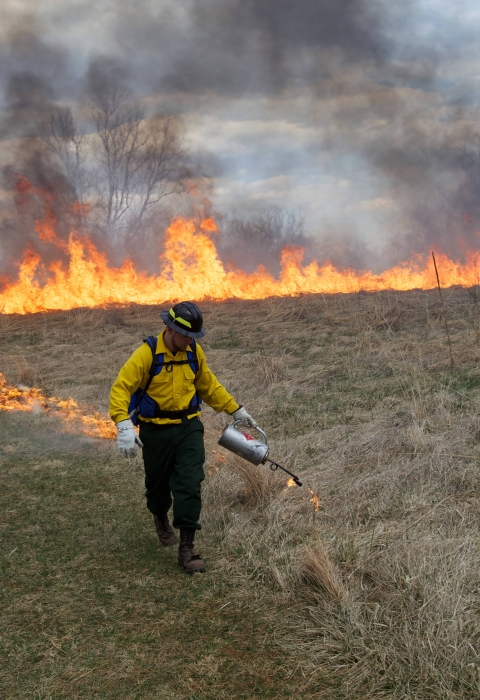Deer Flat National Wildlife Refuge personnel and fire manager will be conducting two prescribed fires on 85-acres of Deer Flat National Wildlife Refuge. A prescribed fire may start as early as March 25, 2024, depending on weather and proper burn windows. The prescribed fires are planned on the Leavitt Tract, eastern most portion of the refuge, and the Upper Dam Marsh, along Lake Avenue, south and west of the intersection with West Roosevelt Avenue. Area residents and visitors to the refuge should expect to see smoke from fire operations and potential smoke impact to nearby roads for a few days during and post burn. All efforts will be made to reduce these impacts during and after burning operations.
Refuge managers work with fire management specialists to plan each prescribed fire to ensure safety and maximize its effectiveness for both habitat and wildlife. Fire is an important conservation tool that allows the Service to remove invasive species invasive species
An invasive species is any plant or animal that has spread or been introduced into a new area where they are, or could, cause harm to the environment, economy, or human, animal, or plant health. Their unwelcome presence can destroy ecosystems and cost millions of dollars.
Learn more about invasive species and improve habitat for the wildlife that depend on places like Deer Flat. The prescribed burn prescribed burn
A prescribed burn is the controlled use of fire to restore wildlife habitat, reduce wildfire risk, or achieve other habitat management goals. We have been using prescribed burn techniques to improve species habitat since the 1930s.
Learn more about prescribed burn is intended to reduce dead upland and wetland vegetation in efforts to increase the quality of wildlife habitat while reducing unwanted hazardous fuels in efforts to help prevent catastrophic wildfire occurrence.
Before any prescribed fire takes place, fire management specialists, firefighters and refuge managers work together to create a prescribed fire plan, a detailed prescription for where, when and how a fire will be used to restore habitat. This includes strict safety measures, such as a pre- and post- burn monitoring plan and identifying the ideal weather and wind conditions for the prescribed fire to take place. Because of the important role weather plays, managers identify a burn window – a specific length of time during which a prescribed fire might take place. The official day of the fire is not set until a day or few days before, to ensure optimum conditions for the prescribed fire.
Updates on prescribed burns and temporary closures will be found on the Deer Flat National Wildlife Refuge's homepage and Facebook page.
4/11/2024 Update:
- Leavitt Tract - eastern most portion of refuge, east of Tio Lane entrance and west of Highway 45 (Burn completed 4/10/2024)
- Upper Dam Marsh - along Lake Avenue, south and west of the intersection with West Roosevelt Avenue (Burn completed 4/2/2024)



